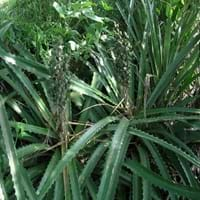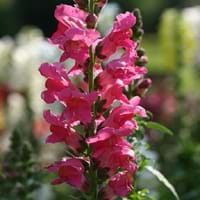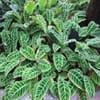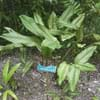Life Span
Annual and Perennial
Annual
Type
Tender Perennial
Tender Perennial
Origin
North America, Mexico, Latin America and the Caribbean, Caribbean, Central America, South America
Southern Europe, Western Europe, Mediterranean
Types
Bromelia agavifolia, Bromelia alsodes, Bromelia alta
Antirrhinum majus , Antirrhinum virga , Antirrhinum orontium
Number of Varieties
Not Available
Habitat
Hills, Lowland, Rocky areas, Thickets
Mediterranean region
USDA Hardiness Zone
Not Available
9-11
AHS Heat Zone
Not Available
12-1
Sunset Zone
Not Available
A1, A2, A3, 1a, 1b, 2a, 2b, 3a, 3b, 4, 5, 6, 7, 8, 9, 10, 11, 12, 13, 14, 15, 16, 17, 18, 19, 20, 21, 22, 23, 24
Habit
Not Available
Upright/Erect
Flower Color
Not Available
White, Yellow, Red, Purple, Orange, Pink
Flower Color Modifier
Bicolor
Not Available
Fruit Color
Not Available
Brown
Leaf Color in Spring
Not Available
Green
Leaf Color in Summer
Not Available
Green
Leaf Color in Fall
Not Available
Green
Leaf Color in Winter
Light Green
Not Available
Leaf Shape
Long Linear
Lanceolate
Plant Season
Spring, Summer, Fall, Winter
Spring, Summer, Fall
Sunlight
Not Available
Full Sun
Growth Rate
Not Available
Fast
Type of Soil
Not Available
Clay, Loam, Sand
The pH of Soil
Not Available
Neutral, Alkaline
Soil Drainage
Not Available
Well drained
Bloom Time
Not Available
Late Spring, Early Summer, Summer, Late Summer, Early Fall, Fall
Repeat Bloomer
Not Available
Yes
Tolerances
Drought
Light Frost
Where to Plant?
Container, Ground, Pot
Ground, Pot
How to Plant?
Seedlings
Cuttings, Seedlings
Plant Maintenance
Medium
Medium
Watering Requirements
Average Water Needs, Do Not over Water, Requires regular watering, Water Deeply
Keep the Soil well drained, Over-watering can cause leaf problems or root diseases
In Summer
Lots of watering
Lots of watering
In Spring
Moderate
Moderate
In Winter
Average Water
Average Water
Soil pH
Not Available
Neutral, Alkaline
Soil Type
Not Available
Clay, Loam, Sand
Soil Drainage Capacity
Not Available
Well drained
Sun Exposure
Not Available
Full Sun
Pruning
Cut or pinch the stems, Remove damaged leaves, Remove dead branches, Remove dead leaves, Remove dead or diseased plant parts, Remove deadheads
cut main flower spike, Prune after flowering, Remove damaged leaves, Remove dead branches, Remove dead leaves
Fertilizers
Apply N-P-K, fertilize in fall, fertilize in growing season, fertilize in spring
10-15-10 amounts, All-Purpose Liquid Fertilizer
Pests and Diseases
Red blotch
Aphids, Rust
Plant Tolerance
Drought
Light Frost
Flower Petal Number
Not Available
Single
Showy Fruit
Not Available
No
Edible Fruit
Not Available
No
Fragrant Flower
Not Available
Yes
Fragrant Fruit
Not Available
No
Fragrant Leaf
Not Available
No
Fragrant Bark/Stem
Not Available
No
Showy Foliage
Not Available
No
Showy Bark
Not Available
No
Foliage Texture
Not Available
Medium
Foliage Sheen
Not Available
Matte
Self-Sowing
Not Available
Yes
Attracts
Butterflies
Bees, Butterflies, Not Available
Allergy
Scratches, Skin cuts
Unknown
Aesthetic Uses
Showy Purposes
Beautification, Formal Garden, Informal Hedge, Mixed Border, Showy Purposes, Wild gardens
Beauty Benefits
Skin Problems
Not Available
Environmental Uses
Air purification
Air purification
Medicinal Uses
Not Available
Unknown
Part of Plant Used
Fruits, Leaves
Not Available
Other Uses
Cordage, ropes, Fibre
Beneficial species for attracting pollinators
Used As Indoor Plant
Insignificant
No
Used As Outdoor Plant
Yes
Yes
Garden Design
Not Available
Bedding Plant, Container, Cutflower, Edging, Mixed Border
Botanical Name
BROMELIA pinguin
ANTIRRHINUM majus 'Black Prince'
Common Name
Heart-of-Flame, Maya, Pinuela
Snapdragon
In Hindi
bromelia pinguin plant
snapdragon
In German
Bromelia Pinguin -Anlage
Löwenmaul
In French
plante Bromelia Pinguin
muflier
In Spanish
planta Bromelia Pinguin
boca de dragón
In Greek
φυτό Bromelia Pinguin
snapdragon
In Portuguese
planta Caraguatá
snapdragon
In Polish
Bromelia Pinguin roślin
lwia paszcza
In Latin
Commelina pinguin herba
snapdragon
Phylum
Magnoliophyta
Magnoliophyta
Class
Liliopsida
Magnoliopsida
Order
Bromeliales
Scrophulariales
Family
Bromeliaceae
Scrophulariaceae
Clade
Angiosperms, Commelinids, Monocots
Angiosperms, Asterids, Eudicots
Tribe
Not Available
Not Available
Subfamily
Bromelioideae
Not Available
Number of Species
Not Available
Importance of Bromelia Pinguin and Snapdragon
Want to have the most appropriate plant for your garden? You might want to know the importance of Bromelia Pinguin and Snapdragon. Basically, these two plants vary in many aspects. Compare Bromelia Pinguin and Snapdragon as they differ in many characteristics such as their life, care, benefits, facts, etc. Every gardener must at least have the slightest clue about the plants he wants to plant in his garden. Compare their benefits, which differ in many ways like facts and uses. The medicinal use of Bromelia Pinguin is Not Available whereas of Snapdragon is Unknown. Bromelia Pinguin has beauty benefits as follows: Skin Problems while Snapdragon has beauty benefits as follows: Skin Problems.
Compare Facts of Bromelia Pinguin vs Snapdragon
How to choose the best garden plant for your garden depending upon its facts? Here garden plant comparison will help you to solve this query. Compare the facts of Bromelia Pinguin vs Snapdragon and know which one to choose. As garden plants have benefits and other uses, allergy is also a major drawback of plants for some people. Allergic reactions of Bromelia Pinguin are Scratches and Skin cuts whereas of Snapdragon have Unknown respectively. Having a fruit bearing plant in your garden can be a plus point of your garden. Bromelia Pinguin has no showy fruits and Snapdragon has no showy fruits. Also Bromelia Pinguin is flowering and Snapdragon is not flowering . You can compare Bromelia Pinguin and Snapdragon facts and facts of other plants too.





